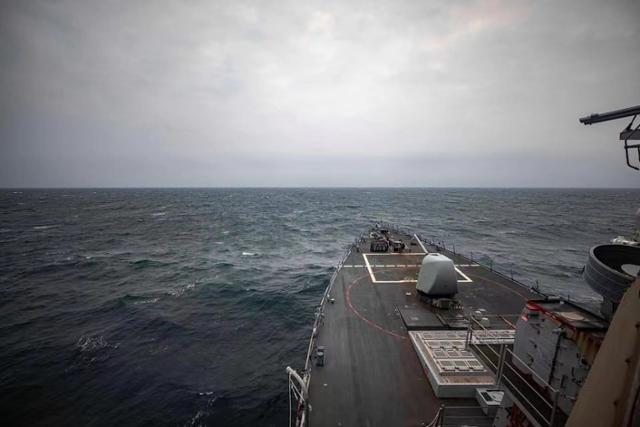
US President Joe Biden (right) and Japanese Prime Minister Yoshihide Suga relocated to Rose Garden after a summit meeting at the White House office on the 16th (local time) to hold a joint press conference. Washington = AP Newsis
US President Joe Biden and Japanese Prime Minister Yoshihide Suga held a summit meeting in Washington on the 16th (local time) and stated “peace and stability in the Taiwan Strait” in a joint statement. This is the first time since 1969, before the establishment of diplomatic relations between the US, Japan and China, the US and Japan leaders have included the Taiwan issue in a joint document. When the two sides joined forces by directly touching the principle of “one China”, China rebelled, saying, “I firmly oppose interference in internal affairs.” The composition of the New Cold War in Northeast Asia is becoming more pronounced. President Biden also supported the Tokyo Olympics again and allowed an additional 100 million doses of Pfizer vaccine. There was no mention of the decision to release Fukushima contaminated water at sea. The burden of the South Korean government ahead of the Korea-US summit next month is also expected to increase due to the outright adherence between the US and Japan and high-strength Chinese checks.
The joint statement released by the US-Japan summit after the talks was culminated in “checking China”. The statement said, “We shared concerns about China’s actions that are not in line with the international order,” and “We emphasize the importance of peace and stability in the Taiwan Strait, and urge a peaceful resolution of the bilateral issue.” It is different from a’taboo’ in China. The Taiwan Strait, which is not there, is specified. He expressed’serious concern’ over the human rights situation in Hong Kong and Xinjiang, and hinted at the exclusion of Huawei from China in the economic field.
Summary of Joint Statement of US-Japan Summit
China strongly opposed. In a statement released on the night of the 17th (local time), the Ministry of Foreign Affairs of China said, “It has interfered with China’s internal affairs and seriously violated the basic rules of international relations.” Will” he emphasized. In the Senkaku Islands (Chinese name Diaoyudao), retaliatory actions such as armed forces and economic boycotts are expected from inside and outside. The Japanese side is known to have engaged in a tight tug of war with the United States to adjust the water level to keep pace with the United States but not to overstimulate China.
According to the Asahi Shimbun, in the first place, Prime Minister Suga was not actively involved in the Taiwan issue, given that Japan had a large economic interest in China. However, Gert Campbell, the Indo-Pacific Coordinator of the White House National Security Council (NSC), visited Japan and persuaded Japan’s demands to derive a name for the Taiwan Strait.

The United States and China recently engaged in armed demonstrations in the Taiwan Strait, showing off each other’s military strength. In a press release posted on the Internet website on the 7th, the U.S. Pacific Fleet released a related picture, stating that John S. McCain, an Arleigh Burke-class missile destroyer, had passed the international waters in the Taiwan Strait based on international law on the same day. Provided by the US Pacific Fleet. yunhap news
Japanese media analyzed that the US obsessed with the Taiwan Strait is that the Chinese invasion scenario is likely to be realistic. US Indo-Pacific Commander Philip Davidson has warned that China is at increased risk of invading Taiwan within six years. The Yomiuri Shimbun reported that the United States is hoping for support from the Japanese Self-Defense Forces in the event of an emergency in Taiwan and joint exercises based on this, as well as the deployment of mid-range missiles by the US military. The analysis also came out that this statement was “the prerequisite for the establishment of a plan for joint US-Japan operations”.
In fact, Japan’s Defense Minister Kishi Nobuo (岸信夫) inspected the self-defense forces in Yonagunijima, Okinawa Prefecture, about 110 km from Taiwan on the afternoon of the 17th (Japan time) when the joint statement was announced. The Japanese government has been conscious of China’s advance into the sea in the South and South China Seas since several years ago, and has established self-defense bases and missile troops in various parts of the Nansei Islands in southwestern Okinawa. In Japan, it is wary that it will be a target for China’s missile strike in the event of an emergency in Taiwan.
Professor Lee Jong-won of Waseda University said, “The US has no financial space to devote to the defense field and there are many domestic issues, so it is easiest to use Japan to express a strong public posture.” He said, “I asked for a lot in return for accepting the request.” Prof. Lee said, “Korea will also be under pressure to join the public front, but as the summit is delayed than Japan, there is also a side to gain time to re-examine the strategy while looking at the level of China’s response to Japan.”

The deployment of self-defense forces on the Nansei Islands in Japan near Taiwan
Washington= Jeong Won Correspondent [email protected]
Tokyo= Jinjoo Choi Correspondent [email protected]
News directly edited by Hankook Ilbo can also be viewed on Naver

